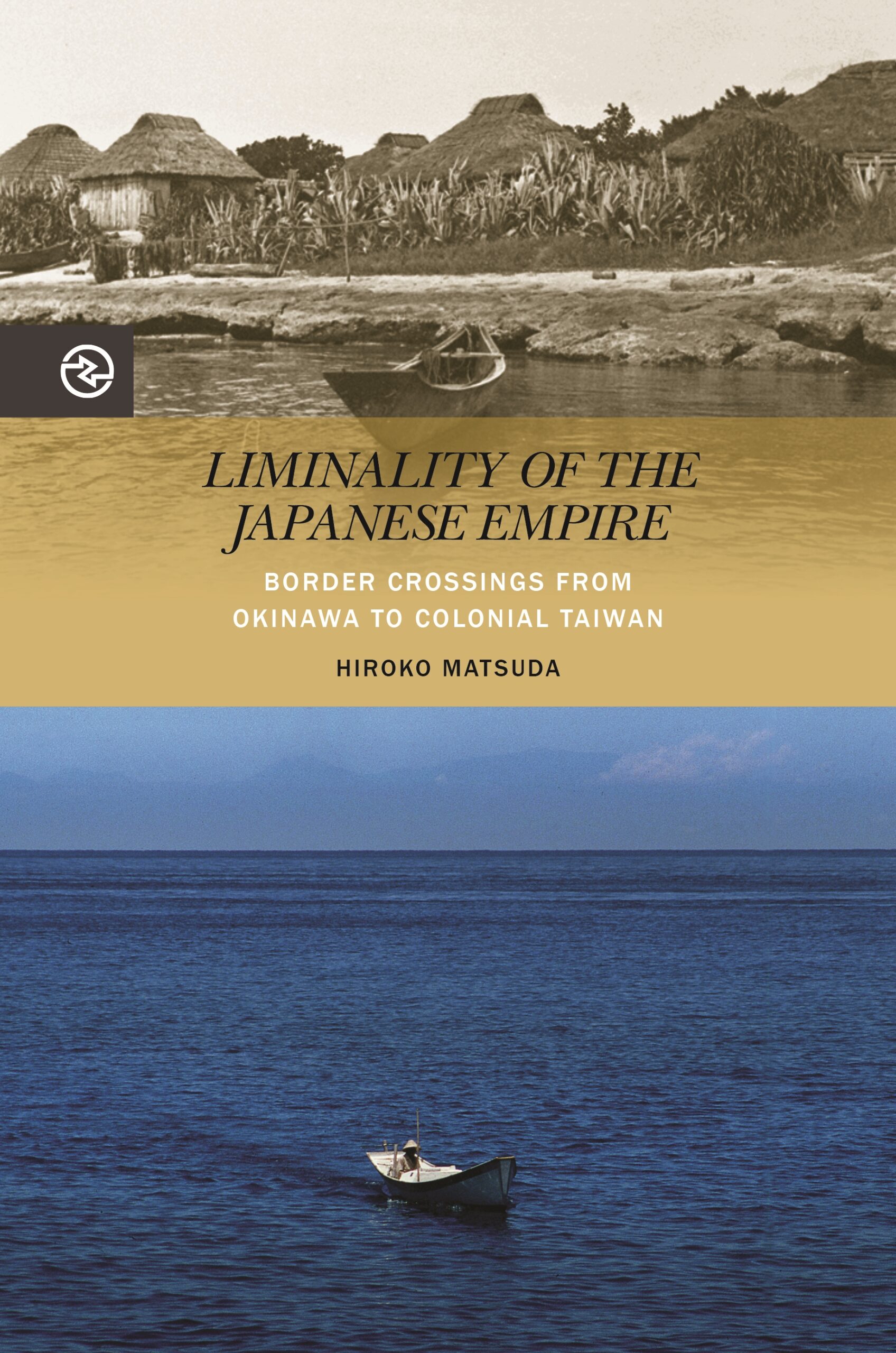Liminality of the Japanese Empire: Border Crossings from Okinawa to Colonial Taiwan
- About the Book
-
Okinawa, one of the smallest prefectures of Japan, has drawn much international attention because of the long-standing presence of US bases and the people’s resistance against them. In recent years, alternative discourses on Okinawa have emerged due to the territorial disputes over the Senkaku Islands, and the media often characterizes Okinawa as the borderland demarcating Japan, China (PRC), and Taiwan (ROC). While many politicians and opinion makers discuss Okinawa’s national and security interests, little attention is paid to the local perspective toward the national border and local residents’ historical experiences of border crossings.
Through archival research and first-hand oral histories, Hiroko Matsuda uncovers the stories of common people’s move from Okinawa to colonial Taiwan and describes experiences of Okinawans who had made their careers in colonial Taiwan. Formerly the Ryukyu Kingdom and a tributary country of China, Okinawa became the southern national borderland after forceful Japanese annexation in 1879. Following Japanese victory in the First Sino-Japanese War and the cession of Taiwan in 1895, Okinawa became the borderland demarcating the Inner Territory from the Outer Territory. The borderland paradoxically created distinction between the two sides, while simultaneously generating interactions across them. Matsuda’s analysis of the liminal experiences of Okinawan migrants to colonial Taiwan elucidates both Okinawans’ subordinate status in the colonial empire and their use of the border between the nation and the colony.
Drawing on the oral histories of former immigrants in Taiwan currently living in Okinawa and the Japanese main islands, Matsuda debunks the conventional view that Okinawa’s local history and Japanese imperial history are two separate fields by demonstrating the entanglement of Okinawa’s modernity with Japanese colonialism. The first English-language book to use the oral historical materials of former migrants and settlers—most of whom did not experience the Battle of Okinawa—Liminality of the Japanese Empire presents not only the alternative war experiences of Okinawans but also the way in which these colonial memories are narrated in the politics of war memory within the public space of contemporary Okinawa.
- About the Author(s)
-
Hiroko Matsuda, Author
Hiroko Matsuda is associate professor at Kobe Gakuin University in Japan.Anand A. Yang, Series Editor
Kieko Matteson, Series Editor
- Reviews and Endorsements
-
- Throughout the book, Matsuda provides incredibly rich details on the lives of Okinawans, gleaned from a wealth of memoirs, oral histories, other documentary evidence, and her own interviews with former residents of Taiwan. She demonstrates well the benefits of an ethnographic approach for recovering long-ignored histories. . . . Far from a seamless political entity, or a collectivity of “100-million hearts beating as one,” in the phrase of wartime propaganda, modern Japan emerges from the pages of Matsuda’s book as a somewhat fragile construction during its imperial heyday, and it is equally clear that some of those divisions remain, in the incomplete and contested memories of that past.
—Evan Dawley, Goucher College, Baltimore, Pacific Affairs, 93:3 (September 2020) - Crucially, Matsuda's focus extends beyond the main island of Okinawa and the ordeals of the Battle of Okinawa, thus enriching our perspective of this period and people's experience. . . . While tracing their multifaceted marginalization within dominant mainland Japan and Taiwan under Japanese colonial rule, Matsuda skillfully integrates topics such as class and gender throughout the work. The inclusion of a wide range of supplementary materials—including maps, photographs, tables, and advertisements—enhances the reader's ability to imagine the macro and micro picture of the realities and meanings of the border crossings.
—Michele M. Mason, University of Maryland–College Park, The Journal of Japanese Studies, 46:2 (2020) - [The panel members] were impressed by the skilful weaving together of analysis at different scales, from the individual to the empire; the richness of the historical narrative that unfolds; and the author’s ability to combine oral history interviews with archival sources in Japanese, Chinese and English.
—Judges' comments, 2020 Asian Studies Association of Australia (ASAA) Early Career Book Prize - The unifying theme of this history is liminality, emphasizing the inability of binary categories to capture the status or experience of Okinawan Japanese moving to and within Taiwan under Japanese rule. . . . This is a valuable, accessible work illuminating a fascinating set of interactions and reactions. The book clearly and deliberately sits at the intersection of many current lines of scholarly inquiry, and should be taken seriously by people working on modern Pacific history, empires, geography, ethnicity, and migrations.
—Jonathan Dresner, Pittsburgh State University, H-Net Reviews (H-Migration, July 2020) - Liminality of the Japanese Empire draws a historical retrospect with elements familiar to ethnographic writing: colonial experience through life histories and an overarching interethnic context. Moreover, it dispenses with the all-too-familiar study of a generic Okinawa in favor of a view that foregrounds the southern region of the archipelago. . . . Arguably, the book's most telling example of a perceptual disconnect between Okinawan and mainstream Japanese ways is that of female hand tattooing. . . . By foregrounding the southern cluster of islands, the Yeayamas, in Japan's interface with the outside world, the book makes the reader acquainted with a not often recognized contiguity, geographical and social, with a larger Asian domain.
—Arne Røkkum, University of Oslo, Asian Ethnology, 79:1 (2020)
- Throughout the book, Matsuda provides incredibly rich details on the lives of Okinawans, gleaned from a wealth of memoirs, oral histories, other documentary evidence, and her own interviews with former residents of Taiwan. She demonstrates well the benefits of an ethnographic approach for recovering long-ignored histories. . . . Far from a seamless political entity, or a collectivity of “100-million hearts beating as one,” in the phrase of wartime propaganda, modern Japan emerges from the pages of Matsuda’s book as a somewhat fragile construction during its imperial heyday, and it is equally clear that some of those divisions remain, in the incomplete and contested memories of that past.
- Supporting Resources
-










